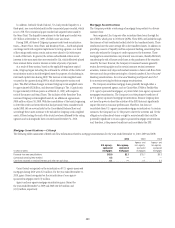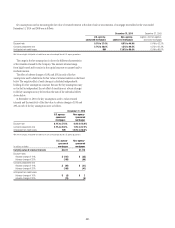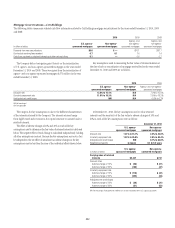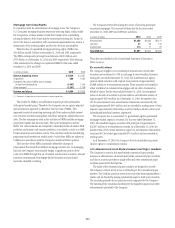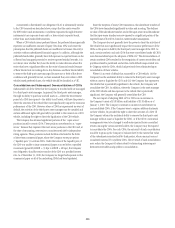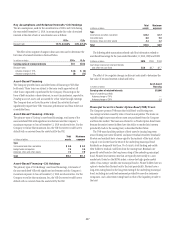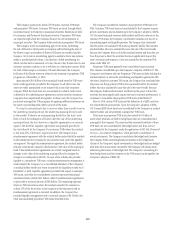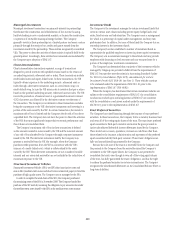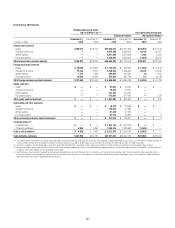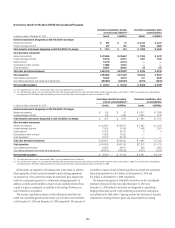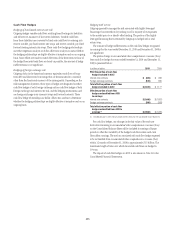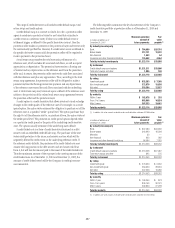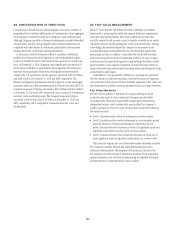Citibank 2010 Annual Report Download - page 251
Download and view the complete annual report
Please find page 251 of the 2010 Citibank annual report below. You can navigate through the pages in the report by either clicking on the pages listed below, or by using the keyword search tool below to find specific information within the annual report.249
Municipal Investments
Municipal investment transactions are primarily interests in partnerships
that finance the construction and rehabilitation of low-income housing,
facilitate lending in new or underserved markets, or finance the construction
or operation of renewable municipal energy facilities. The Company
generally invests in these partnerships as a limited partner and earns a return
primarily through the receipt of tax credits and grants earned from the
investments made by the partnership. These entities are generally considered
VIEs. The power to direct the activities of these entities is typically held by the
general partner. Accordingly, these entities have remained unconsolidated by
the Company upon adoption of SFAS 167.
Client Intermediation
Client intermediation transactions represent a range of transactions
designed to provide investors with specified returns based on the returns of
an underlying security, referenced asset or index. These transactions include
credit-linked notes and equity-linked notes. In these transactions, the VIE
typically obtains exposure to the underlying security, referenced asset or
index through a derivative instrument, such as a total-return swap or a
credit-default swap. In turn the VIE issues notes to investors that pay a return
based on the specified underlying security, referenced asset or index. The VIE
invests the proceeds in a financial asset or a guaranteed insurance contract
(GIC) that serves as collateral for the derivative contract over the term of
the transaction. The Company’s involvement in these transactions includes
being the counterparty to the VIE’s derivative instruments and investing in a
portion of the notes issued by the VIE. In certain transactions, the investor’s
maximum risk of loss is limited and the Company absorbs risk of loss above
a specified level. The Company does not have the power to direct the activities
of the VIEs that most significantly impact their economic performance and
thus it does not consolidate them.
The Company’s maximum risk of loss in these transactions is defined
as the amount invested in notes issued by the VIE and the notional amount
of any risk of loss absorbed by the Company through a separate instrument
issued by the VIE. The derivative instrument held by the Company may
generate a receivable from the VIE (for example, where the Company
purchases credit protection from the VIE in connection with the VIE’s
issuance of a credit-linked note), which is collateralized by the assets
owned by the VIE. These derivative instruments are not considered variable
interests and any associated receivables are not included in the calculation of
maximum exposure to the VIE.
Structured Investment Vehicles
Structured Investment Vehicles (SIVs) are SPEs that issue junior notes and
senior debt (medium-term notes and short-term commercial paper) to fund the
purchase of high quality assets. The Company acts as manager for the SIVs.
In order to complete the wind-down of the SIVs, the Company purchased
the remaining assets of the SIVs in November 2008. The Company funded the
purchase of the SIV assets by assuming the obligation to pay amounts due under
the medium-term notes issued by the SIVs as the medium-term notes mature.
Investment Funds
The Company is the investment manager for certain investment funds that
invest in various asset classes including private equity, hedge funds, real
estate, fixed income and infrastructure. The Company earns a management
fee, which is a percentage of capital under management, and may earn
performance fees. In addition, for some of these funds the Company has an
ownership interest in the investment funds.
The Company has also established a number of investment funds as
opportunities for qualified employees to invest in private equity investments.
The Company acts as investment manager to these funds and may provide
employees with financing on both recourse and non-recourse bases for a
portion of the employees’ investment commitments.
The Company has determined that a majority of the investment vehicles
managed by Citigroup are provided a deferral from the requirements of
SFAS 167, because they meet the criteria in Accounting Standards Update
No. 2010-10, Consolidation (Topic 810), Amendments for Certain
Investment Funds (ASU 2010-10) (see Note 1). These vehicles continue
to be evaluated under the requirements of ASC 810-10, prior to the
implementation of SFAS 167 (FIN 46(R)).
Where the Company has determined that certain investment vehicles are
subject to the consolidation requirements of SFAS 167, the consolidation
conclusions reached upon initial application of SFAS 167 are consistent
with the consolidation conclusions reached under the requirements of
ASC 810-10, prior to the implementation of SFAS 167.
Trust Preferred Securities
The Company has raised financing through the issuance of trust preferred
securities. In these transactions, the Company forms a statutory business trust
and owns all of the voting equity shares of the trust. The trust issues preferred
equity securities to third-party investors and invests the gross proceeds in
junior subordinated deferrable interest debentures issued by the Company.
These trusts have no assets, operations, revenues or cash flows other than
those related to the issuance, administration and repayment of the preferred
equity securities held by third-party investors. These trusts’ obligations are
fully and unconditionally guaranteed by the Company.
Because the sole asset of the trust is a receivable from the Company and
the proceeds to the Company from the receivable exceed the Company’s
investment in the VIE’s equity shares, the Company is not permitted to
consolidate the trusts, even though it owns all of the voting equity shares
of the trust, has fully guaranteed the trusts’ obligations, and has the right
to redeem the preferred securities in certain circumstances. The Company
recognizes the subordinated debentures on its Consolidated Balance Sheet as
long-term liabilities.



